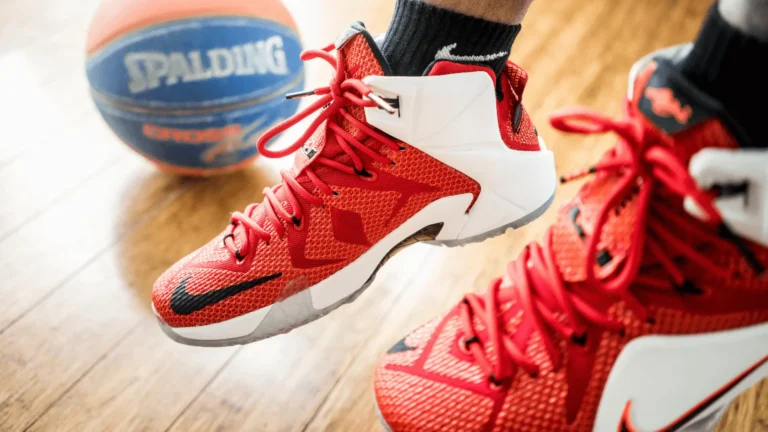Are Basketball Shoes Good for Weightlifting?
Are you considering using your trusty basketball shoes for your next weightlifting session?
It’s a common question, especially since basketball shoes are often comfortable and stylish. But are they really suitable for weightlifting?
In this article, we’ll take a closer look at the differences between basketball shoes and weightlifting shoes, and explore the advantages and disadvantages of each type of shoe for lifting weights.
Differences between basketball shoes and weightlifting shoes
Before we dive into the specific advantages and disadvantages of using basketball shoes for weightlifting, it’s important to understand the differences between these two types of shoes.
Let’s take a closer look at the design and features of basketball shoes and weightlifting shoes, and how they compare to one another.
Differences between basketball shoes and weightlifting shoes:
Design:
- Basketball shoes are designed for high-impact, lateral movement and feature a high-top silhouette for ankle support.
- Weightlifting shoes have a lower profile and are designed for stability and support during heavy lifts.
Sole:
- Basketball shoes have a rubber sole with treads for traction on the court.
- Weightlifting shoes have a flat, firm sole made of wood or hard plastic, which helps to increase power and efficiency in lifts.
Heel:
- Basketball shoes have a relatively flat heel, or a small heel lift at most.
- Weightlifting shoes have an elevated heel, typically ranging from 0.75-1.5 inches, which helps to improve the lifter’s posture and leverage during lifts.
Comparison Chart:
| Feature | Basketball Shoes | Weightlifting Shoes |
|---|---|---|
| Design | High-top, lateral movement | Low-profile, stability and support |
| Sole | Rubber, treads | Flat, firm (wood or hard plastic) |
| Heel | Flat or small lift | Elevated (0.75-1.5 inches) |
Advantages of weightlifting shoes for lifting
Now that we’ve outlined the key differences between basketball shoes and weightlifting shoes, let’s discuss the advantages of using weightlifting shoes for lifting weights.
Advantages of weightlifting shoes for lifting:
- Stabilization and support: Weightlifting shoes are designed specifically for heavy lifting and provide a stable base for the feet. The elevated heel and firm sole help to improve posture and alignment during lifts, which can reduce the risk of injury.
- Increased power and efficiency: The flat, firm sole of weightlifting shoes allows for a more efficient transfer of force from the feet to the ground, which can help to increase power and efficiency in lifts. The elevated heel also helps to improve leverage and increase the range of motion in certain lifts.
- Comfort: Many weightlifting shoes are also designed with comfort in mind, featuring padded tongues and collars and breathable materials to keep feet cool and dry during intense workouts.
Disadvantages of basketball shoes for lifting
While basketball shoes may be a popular choice for everyday wear and even cardio and plyometric workouts, they may not be the best choice for heavy weightlifting. Here are a few disadvantages of using basketball shoes for lifting weights:
Disadvantages of basketball shoes for lifting:
- Lack of stability and support: The flat heel and flexible sole of basketball shoes do not provide the same level of stability and support as weightlifting shoes. This can lead to poor posture and alignment during lifts, which can increase the risk of injury.
- Inability to generate as much power and efficiency: The rubber sole and treads of basketball shoes are not designed for the same level of force and stability as weightlifting shoes. This can limit the amount of power and efficiency that can be generated during lifts.
- Limited mobility: The high-top design of basketball shoes may also restrict mobility in certain lifts, such as squats, where a greater range of motion is beneficial.
It’s important to note that these disadvantages are not specific to all basketball shoes and may vary depending on the specific model and design. However, it’s worth considering the features and design of your basketball shoes before using them for heavy weightlifting.
Conclusion
In conclusion, while basketball shoes may be a comfortable and stylish option for everyday wear, they may not be the best choice for heavy weightlifting.
The differences in design and features between basketball shoes and weightlifting shoes can significantly impact performance and safety during lifts. Weightlifting shoes offer a number of advantages, including stability, support, and increased power and efficiency, that make them a more suitable choice for heavy lifting.
On the other hand, basketball shoes may lack these features and may even increase the risk of injury due to their flat heel and flexible sole. If weightlifting is a primary focus in your training routine, it may be worth investing in a pair of weightlifting shoes to ensure optimal performance and safety during your lifts.

Hi there, my name is Aditya and I am a runner, NASAM certified coach, and a fitness and nutrition enthusiast. Running has been my passion for as long as I can remember, and I am truly grateful that I get to pursue it every day. When I’m not coaching or running, you can often find me admiring my collection of running shoes. My love for shoes started at a young age, and I have since grown a collection that I am proud of.





